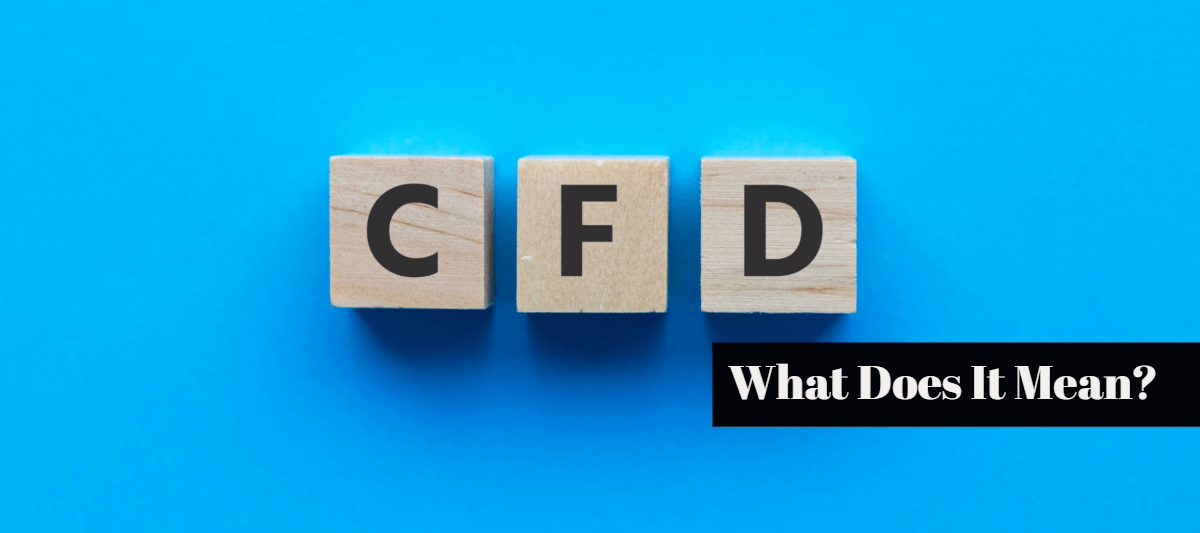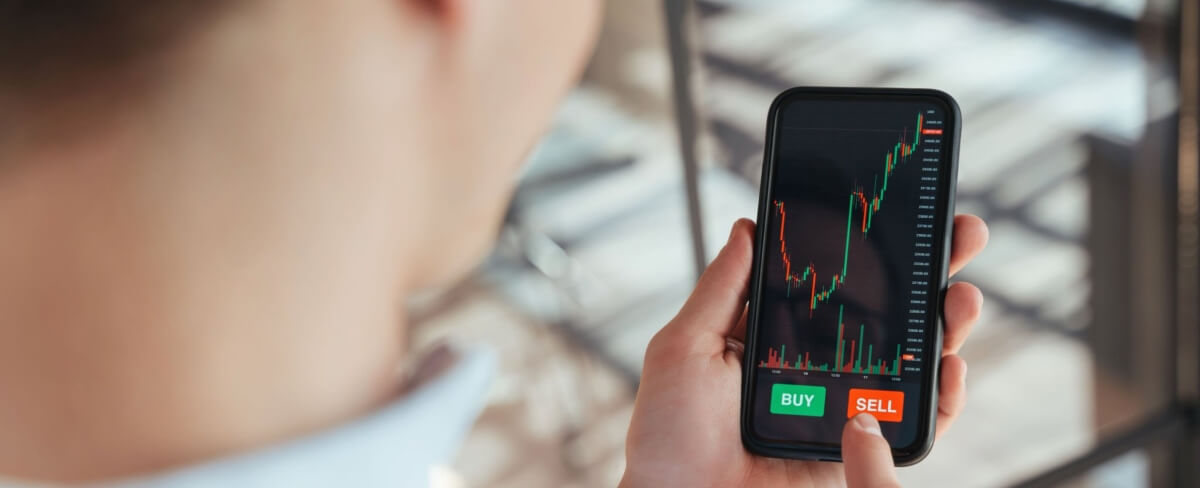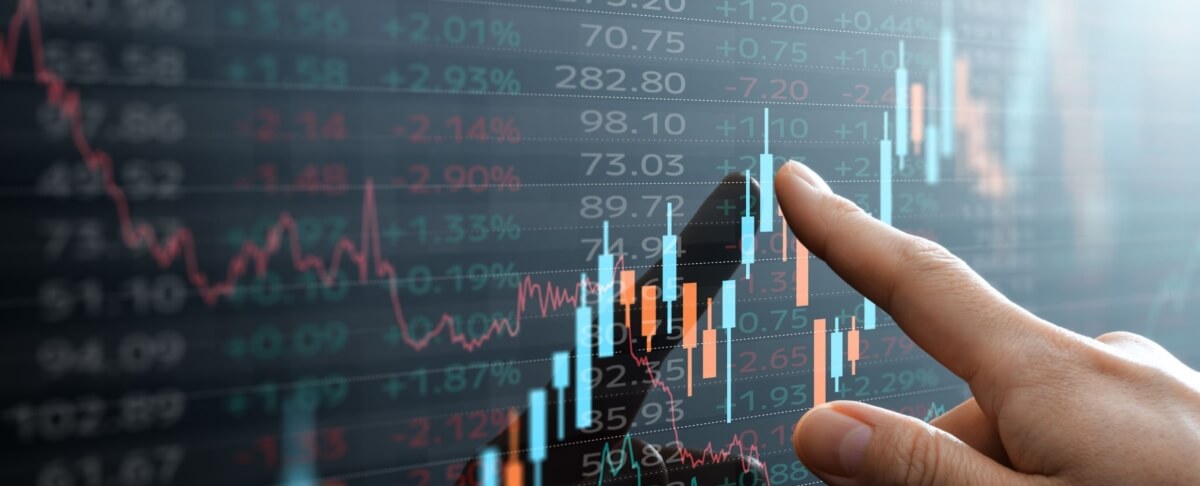
Contract for Difference or CFDs are financial instruments that have some unique characteristics that make them interesting: they allow traders to take a position on the price of a financial instrument without actually owning the underlying asset.
Furthermore, CFDs are attractive to many investors since you can profit from both falling and rising markets. Obviously, trading such instruments has its advantages and disadvantages which it is extremely important to understand thoroughly before venturing into the world of investments.
What is CFD?
As the name suggests, a Contract for Difference is an over-the-counter (OTC) financial contract between the “buyer”, the one who buys the instrument, and the “seller”, the one who sells the instrument).
These two parties agree to exchange money based on the change in value of a financial instrument. Therefore, in the relationship established between broker and trader, there is an agreement in which the trader gets payments if the market goes in the direction for which the financial instrument was purchased, or makes payments if the market goes in the opposite direction.
Therefore, there is no actual buying or selling of financial instruments, just the existence of an understanding (in this case, between the trader and the broker) to settle the difference in value between the opening and closing price of the CFD.
So in a nutshell, CFD is a financial derivative instrument that allows traders to speculate on the price movements of various assets, such as stocks, commodities, currencies, indices, and cryptocurrencies, without actually owning the underlying asset.
How CFDs Work
In order to understand how CFDs work, it is essential to have a good understanding of some essential concepts that underlie the mechanism of these instruments.
CFDs are quoted with two prices: the purchase price (buy) and the sale price (sell). The buy price is always higher than the sell price and the difference between the two is called the spread.
In the event that a trader believes that the price of a particular asset will increase, he will go long, buying that instrument with the aim of profiting from any increase in price.
Conversely, if you assume that an asset will fall in price, you should go short, selling that asset in order to profit from the hypothetical fall in price.
Of course, in case the markets don’t move in the expected direction, you will make a loss.
The amount of gain or loss depends on the size of the position (also called lot size) and the size of the market price movement. CFDs are in fact traded in standardized contracts or lots, the unit size of which depends on the underlying asset being traded, as Contracts for Difference mimic the way such real asset is traded on the market.

Example of trading CFDs in Forex
Let’s consider a practical example of what it means to trade Contract for Difference.
Imagine you open a long CFD trade on EUR/USD when the exchange rate is 1.1000. You decide to trade 10,000 CFDs (equivalent to 10,000 Euros) with a leverage of 10:1.
- Initial Investment: Since you’re using leverage, you only need to deposit a fraction of the total value, let’s say 10%.
- Total Value of the Trade: 10,000 CFDs x 1.1000 (EUR/USD rate) = $11,000
- Your Initial Investment: 10% of $11,000 = $1,100
Now, let’s consider two scenarios:
Scenario 1 (Profit): The EUR/USD rate rises to 1.1100. You decide to close your trade.
- Price Difference: 1.1100 – 1.1000 = 0.0100 (100 pips)
- Profit: 10,000 CFDs x 0.0100 = $100
Your initial $1,100 investment has now turned into $1,200, resulting in a $100 profit.
Scenario 2 (Loss): The EUR/USD rate falls to 1.0950. You decide to close your trade.
- Price Difference: 1.1000 – 1.0950 = 0.0050 (50 pips)
- Loss: 10,000 CFDs x 0.0050 = $50
Your initial $1,100 investment has decreased to $1,050, resulting in a $50 loss.
In this example, you’ve effectively speculated on the EUR/USD exchange rate without owning the actual currencies.
Example of trading CFDs in Crypto
Let’s say you’re interested in trading Bitcoin, but you don’t want to buy and store the actual cryptocurrency in a wallet. Instead, you opt to trade Bitcoin CFDs:
- Opening a CFD Position:
- You choose a reputable CFD crypto broker that offers cryptocurrency CFDs, like Bitcoin.
- You decide to go long (speculating that the price will rise) on Bitcoin when it’s trading at $40,000.
- Contract Terms:
- You enter into a contract with the CFD provider. This contract mirrors the price of Bitcoin in the real market.
- You choose the size of your contract. Let’s say you decide on a contract size equivalent to 1 Bitcoin.
- Price Movement:
- If the price of Bitcoin rises to $45,000, you earn a profit. The CFD provider pays you the difference between your entry price ($40,000) and the exit price ($45,000) for each contract you hold.
- Conversely, if Bitcoin’s price falls to $35,000, you incur a loss. You would owe the CFD provider the difference between your entry price ($40,000) and the exit price ($35,000) for each contract.
Example of trading CFDs in Stocks
If you’re interested in trading Tesla stocks, for example, but you don’t want to purchase the actual shares, you can decide to use CFDs to speculate on Tesla’s stock price movements. Here’s how:
- Opening a CFD Position:You open a CFD position on Tesla by choosing your desired trade size (number of CFDs) and indicating whether you think Tesla’s stock price will rise (go long) or fall (go short).
- Long Position: If you believe that Tesla’s stock price will increase, you go long. You buy CFDs at the current market price.
- Short Position: If you anticipate that Tesla’s stock price will decrease, you go short. You sell CFDs at the current market price.
- Monitoring the Trade:Let’s assume you went long on Tesla with 10 CFDs at $700 per CFD.
- If the Tesla stock price rises to $750, you can close your CFD position and make a profit. The profit would be the difference between the opening price ($700) and the closing price ($750) per CFD, multiplied by the number of CFDs (10). So, your profit would be ($750 – $700) * 10 = $500.
- However, if Tesla’s stock price falls to $680, and you decide to close your position, you would incur a loss. Your loss would be ($700 – $680) * 10 = $200.
- Settlement: At the close of your CFD position, you settle the difference in price with the broker. If you made a profit, the broker pays you; if you incurred a loss, you pay the broker the difference.
What is Margin and Leverage in CFD Trading?

CFDs, as explained above, replicate the performance of another asset faithfully and with real-time updates. This allows trading on this trend, without the need to purchase the financial asset thus significantly reducing the capital required.
CFDs are traded on margin, which means traders only need to deposit a fraction of the full value of the CFD to open a position.
This margin is then used as collateral for the CFD position and if the CFD price moves against the trader, he may be required to add more capital to his account to maintain the position.
CFDs are also leveraged products, which means that traders can take large positions with relatively little capital.
Using the previous example, if an investor decides to invest in CFDs on Amazon shares, he would need to pay a small amount to open a position.
For example, if a broker provides a leverage of 1:5 , i.e. 20%, you would need to deposit $900 (excluding any commissions and spreads charged by the broker) to trade the same amount.
In the event that these shares rise by 10%, reaching a unit price of $0.495, the value of the CFD position would be equivalent to $4,950. This would result in a profit of $450, which would be equivalent to 50% of the initial deposit, compared to a return of only 10% if the shares had been physically purchased.
However, it is important to remember that such instruments are highly risky and, as they magnify presumed profits, they increase the size of potential losses.
How to trade CFDs?
Here’s how you can start trading CFDs in five simple steps.
1. Choose the CFD broker
First of all, you need to choose a CFD broker online. We advise you to choose only reliable and regulated brokers. This allows you to have total protection on your funds and your data, as well as being protected in case of problems.
2. Create an account
The registration procedure is quick: you will need to enter your personal data and upload a photo of an identity document. This step is a further demonstration of the security of the broker you have chosen because compliance with the anti-money laundering legislation is imposed by regulators.
At this point, you can choose whether to make a first payment or take advantage of a free demo account to practice.
The minimum deposit to start trading CFDs is within everyone’s reach: $100 is often enough to get started.
3. Choose what you want to trade
Use the internal search engine to find the real-time listing page of the assets you want to invest in.
On the best online trading platforms, the choice is truly wide and ranges from currency pairs, stocks, commodities, indices, cryptocurrencies, ETFs and much more.
4. Choose whether to go long or short
Now is the time to choose: based on the current market situation and your forecasts, you can choose whether to go long or go short.
At this point, you will have to choose the capital to invest and confirm the order. The advice is to use only a part of your capital in the single CFD, diversifying your portfolio as much as possible.
5. Use risk management tools
When opening a CFD position, the trader specifies the size of his position (in contracts) and sets a stop loss, and take profit order.
A stop loss closes the CFD position if it reaches a certain price, while a take-profit order closes the CFD position if it reaches a certain price. The CFD broker then matches the trader’s orders with those of other traders in their market.
As for the duration of the trade, CFD trades generally do not have a fixed expiration and the duration depends on the preferences of the individual trader. In general, CFDs are instruments usually used in the very short term, in order to speculate on price increases and decreases.
Read also! 10 CFD Trading Tips to Make Profits
Take away
CFDs offer several advantages, such as liquidity, flexibility, and the ability to trade on margin. However, they also come with risks, especially when trading with leverage. If the market moves against your position, losses can exceed your initial investment.
CFD trading is often used for short-term trading strategies and for hedging existing portfolios. It’s essential to have a good understanding of the underlying assets and the risks associated with CFD trading before getting involved, as it can be complex and may not be suitable for all investors. It’s also crucial to choose a reputable and regulated broker when trading CFDs.
